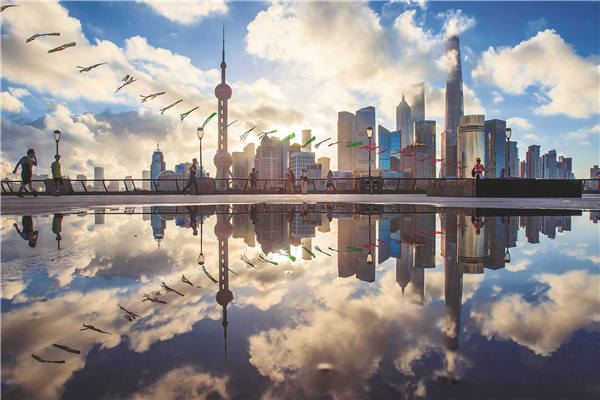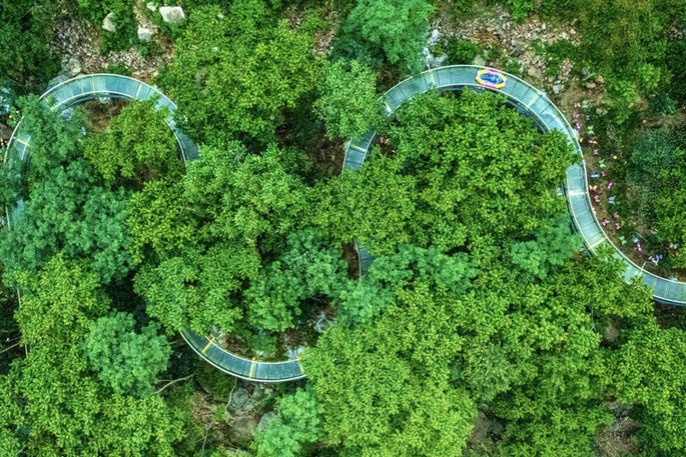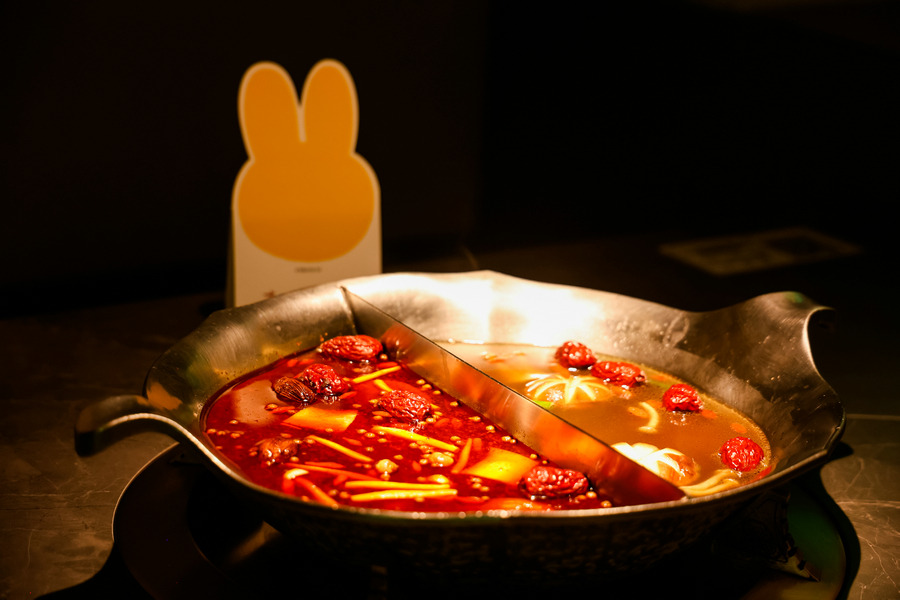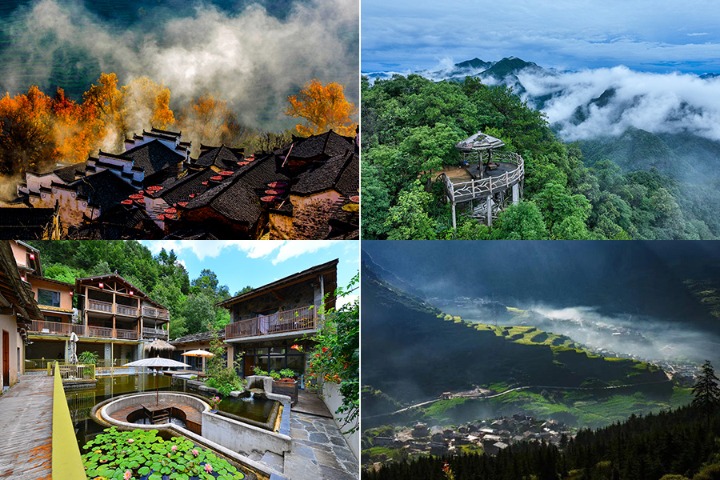Shanghai to get a fresh paint of color


Authorities are looking to help Shanghai stand out by selecting a hue that can best encapsulate the city's personality and heritage.
Every country has its own set of official colors that can be found on their flags. These colors would also be particularly prominent during certain events, such as this year's World Cup in Russia.
The Brazilian players have their bright yellow strips. The English wear predominantly white jerseys with elements of blue and red.
In China, the traditional colors are red and gold.
Cities, on the other hand, don't usually have official colors. But this could soon change in Shanghai, with authorities mulling over whether to select hues to represent the city's character.
In January, Secretary of the Shanghai Municipal Committee of the Communist Party of China Li Qiang said that Shanghai would carry out an in-depth study of urban design and the use of colors as part of efforts to support the city's ambition of becoming a global hub.
"The right use of colors could make the city more attractive and impart joy to our residents. But Shanghai still has room for improvement in this aspect," said Li during his visit to the Shanghai Municipal Administration of Planning and Land Resources.
"The city should have more warm colors to exude a sense of style instead of looking like a concrete jungle."
Li pointed out that urban planners must come up with a unified guideline regarding the use of colors in order to best reflect the city's unique characteristics. According to local authorities, the Shanghai Urban Planning and Design Research Institute has already started work on crafting this guideline which could be published in the second half of this year.
The predominant colors in Shanghai have constantly been changing. For instance, gray was ubiquitous during the city's industrialization phase.
"In the 1970s and 80s, a large number of factory workers like myself moved into residential buildings that had gray walls and ceilings," said Wang Keyi, a 66-year-old Shanghai native.
"Before the 2010 Shanghai World Expo, many of these buildings underwent a facelift. Authorities added sloping red roofs and painted the exteriors beige, which gave a feeling of warmth and comfort," he added.
Some architectural experts agree that Shanghai's status as a mega city and an influential regional hub warrants the selection of primary colors.
"When one color is used as the main hue, the use of other colors in the surrounding can be controlled so that the landscape won't appear disorderly," said Zhang Ming, deputy director of the department of architecture at Shanghai-based Tongji University.
Fu Guohua, general manager of KFS Design International Shanghai, pointed out that as people's reactions to colors change over time, the city's main hue should be one that is timeless. He used the main color of Honolulu as an example.
"Most buildings in Honolulu are painted white or have light colors that contrast with the blue sky and oceans. Such colors fit the environment and make visitors feel comfortable," said.
Zhang suggested using gray as the main hue for Shanghai.
"The old buildings along the waterfront at the Bund are mostly gray. The color is timeless and elegant, reflects Shanghai's culture, and goes well with the city's architectural styles," he said.
Zhang added that the main color in different parts of the city could differ depending on the nature of each section. For instance, the main hues on Chongming Island where there is more greenery would naturally differ from those used in the Lujiazui financial district.
Apart from the main city colors, other hues could also be used to create a more vibrant atmosphere through the use of elements such as vegetation, billboards, street art and taxis.
"Vegetation is a versatile element that allows us to create differing atmospheres because their colors change according to the seasons," said Fu, referring to the city's iconic French plane trees.
The Shanghai government has since 2012 been promoting the best boulevards in the city for visitors to admire the summer greenery or the autumn spectacle of red and yellow leaves that blanket the streets.
Canadian media artist explorer JT Singh said that lighting fixtures can also play a part in making spaces in the city more engaging and aesthetically pleasing. He suggested that more fixtures can be installed on existing old buildings to breathe new life into them and the neighborhoods they are in.
"If someone can recognize Shanghai within moments of seeing one of its streets, and not any of its famous landmarks, that means our color scheme has worked. That is the level we want to be at," said Wang.

































